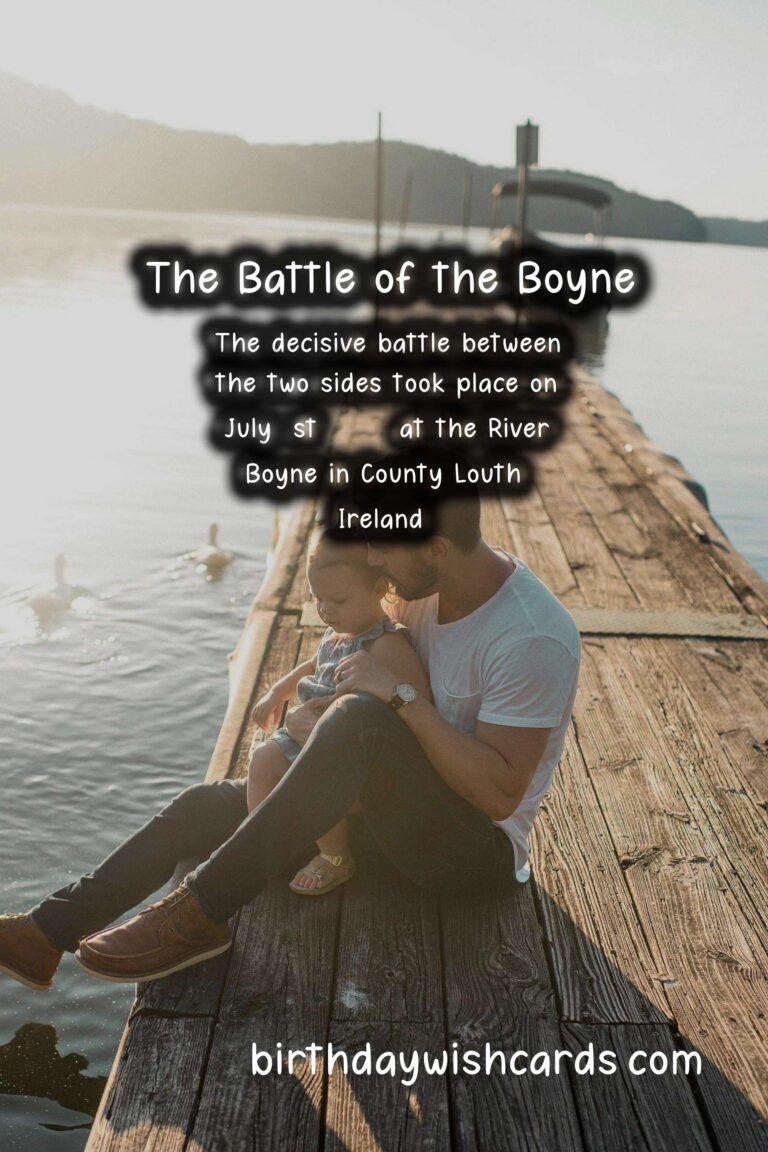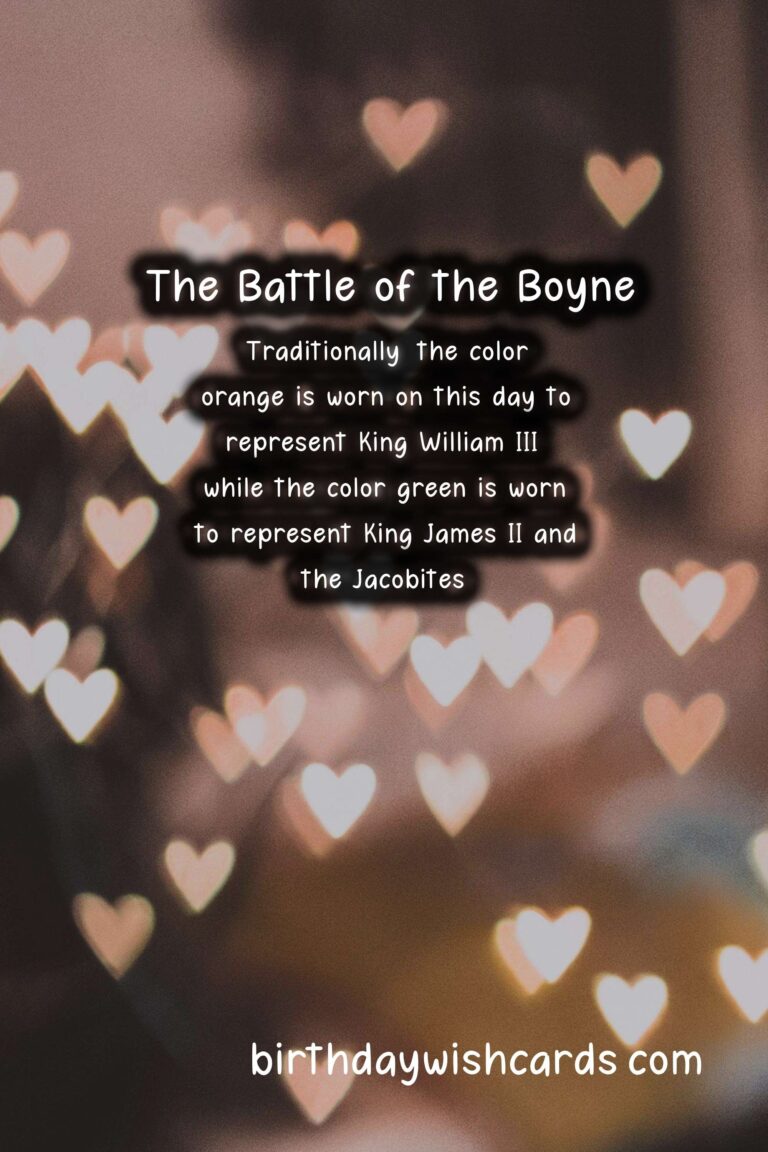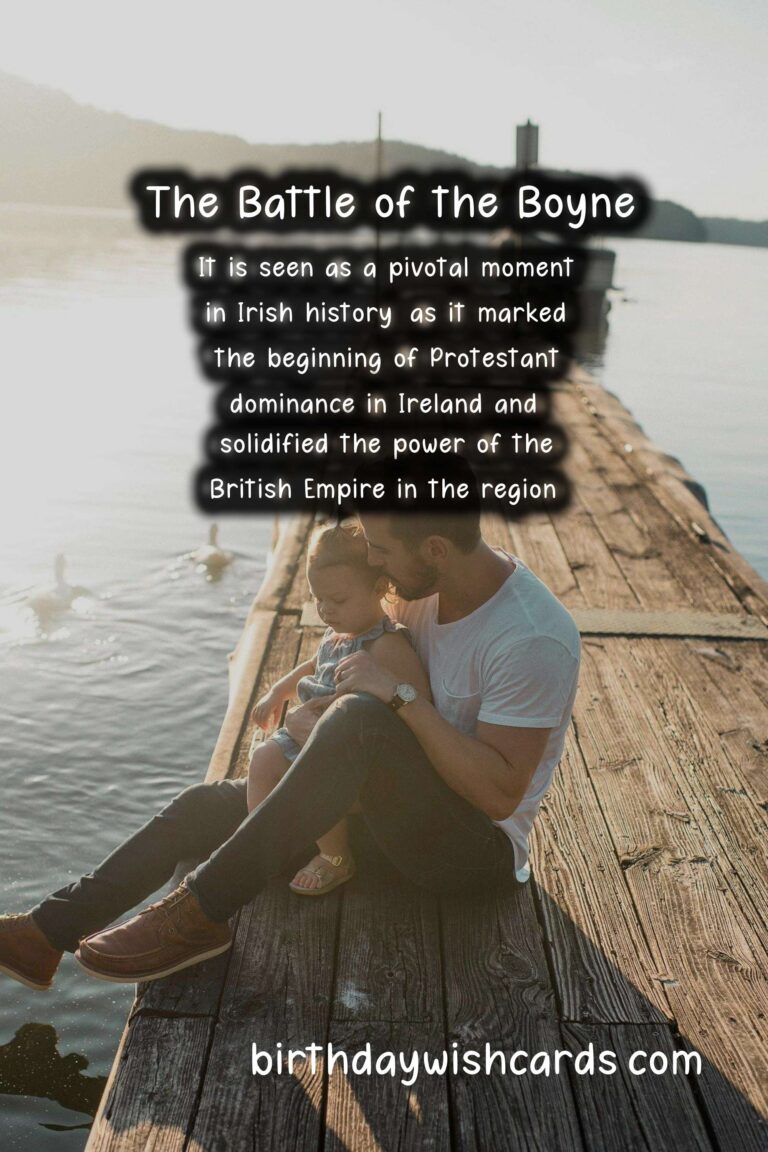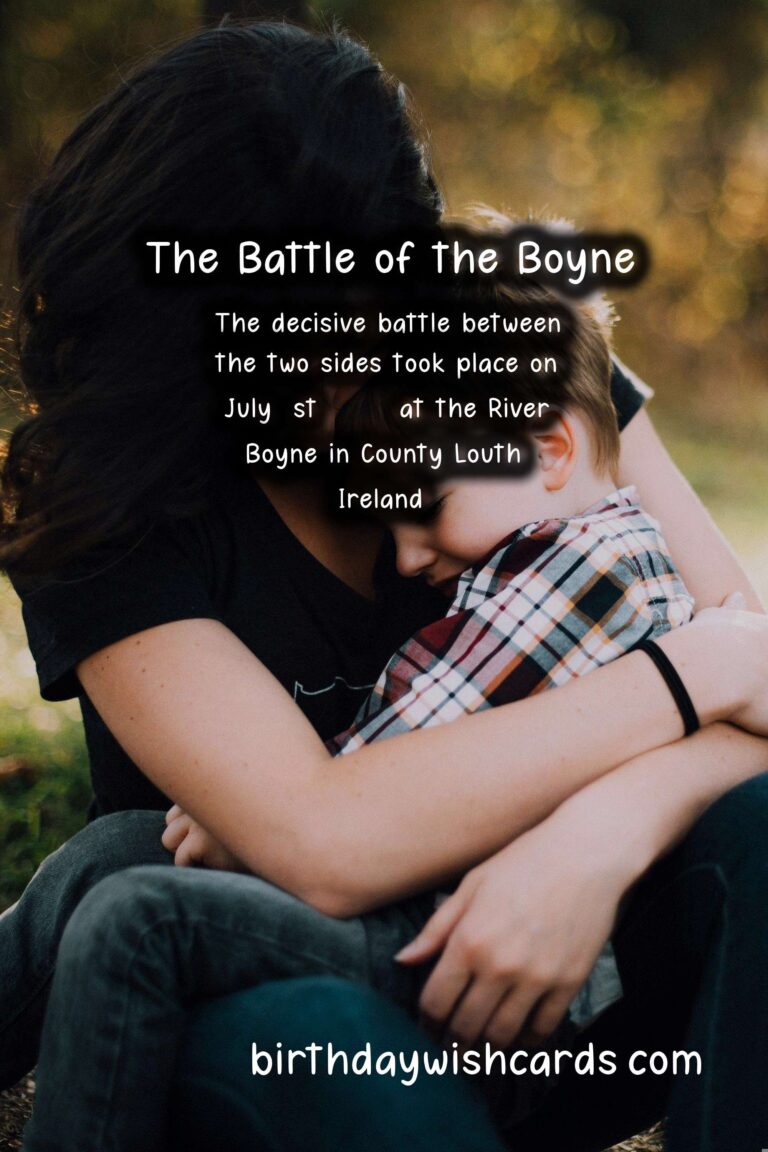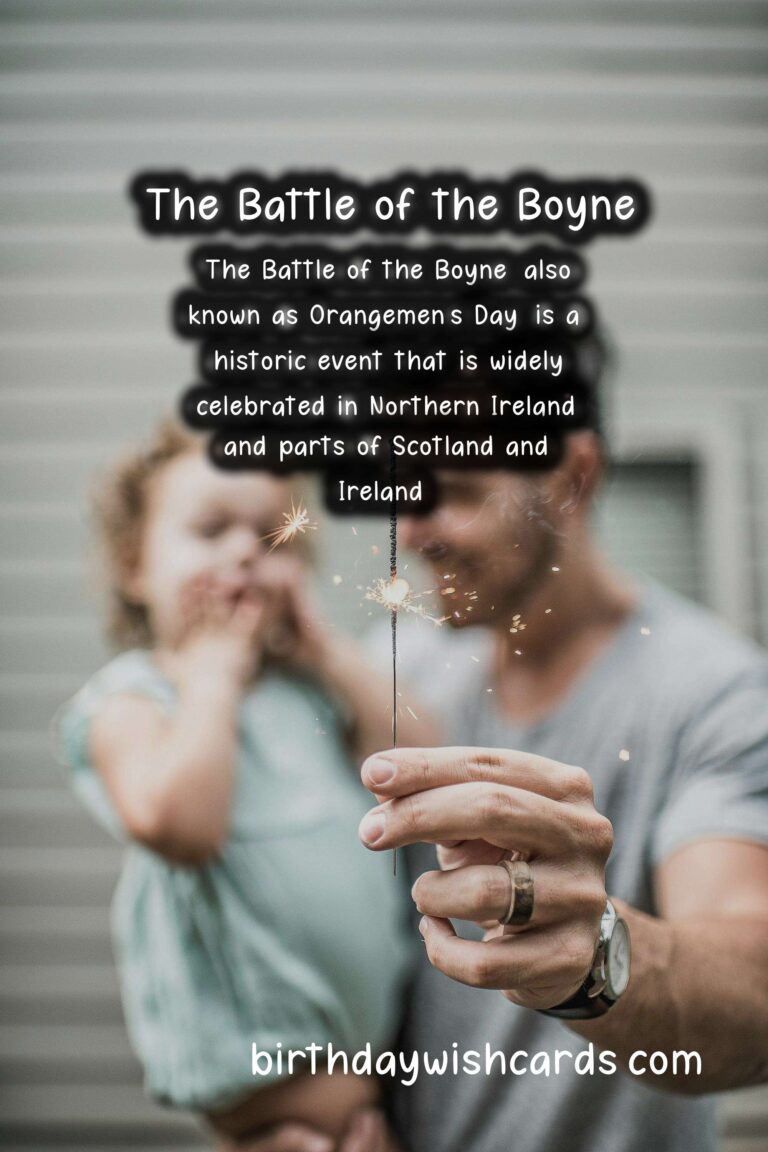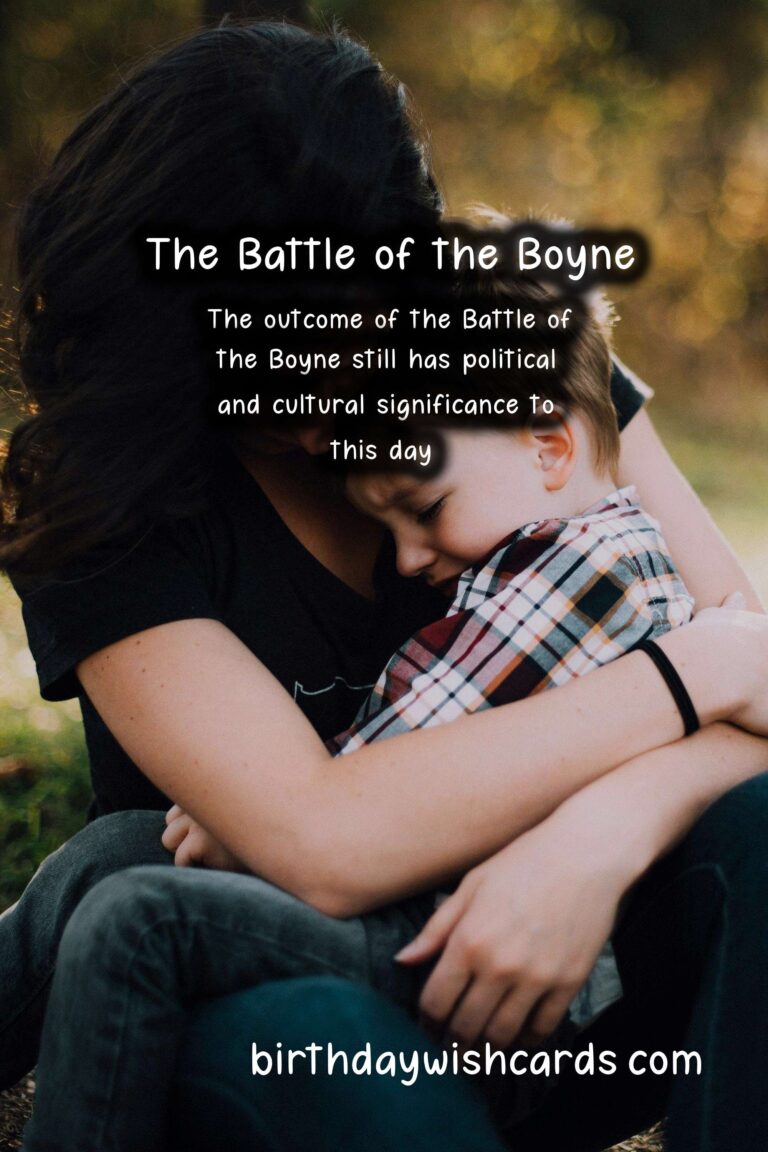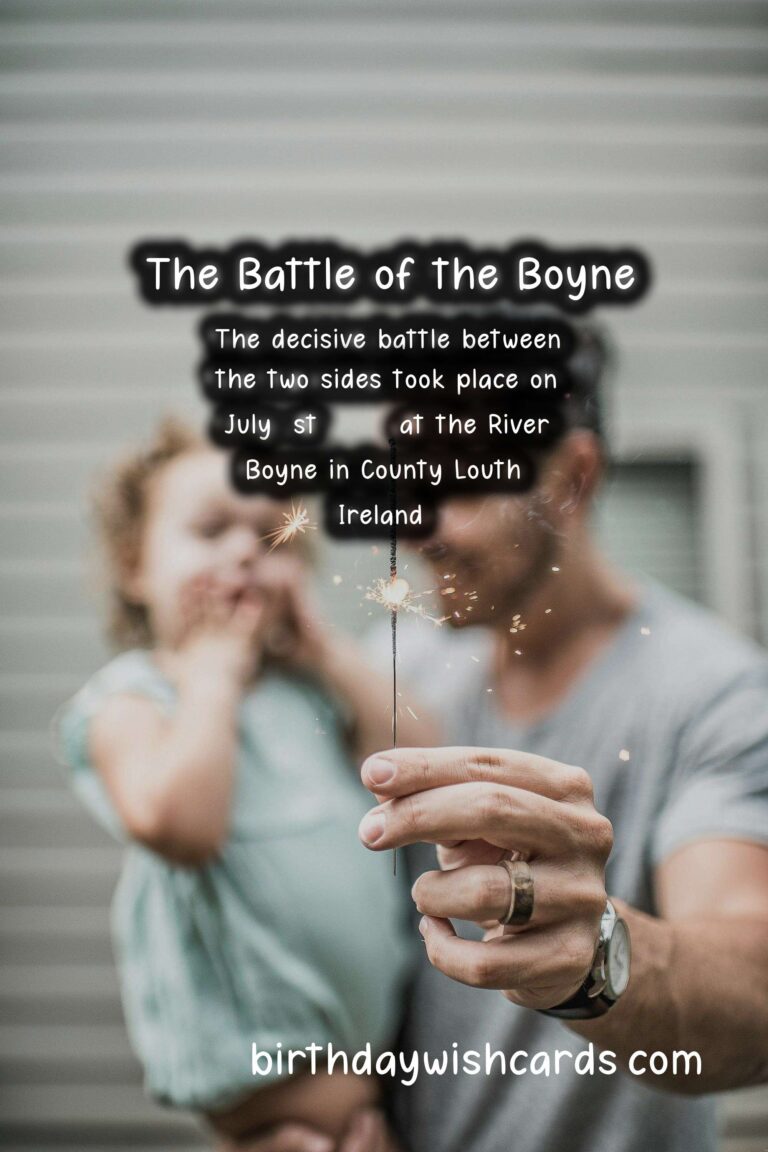
The Battle of the Boyne, also known as Orangemen’s Day, is a historic event that is widely celebrated in Northern Ireland and parts of Scotland and Ireland. It takes place on July 12th of each year and commemorates the victory of King William III of Orange over King James II at the Battle of the Boyne in 1690.
The battle was fought between the Catholic Jacobites, who supported King James II, and the Protestant Williamites, who supported King William III. It is seen as a pivotal moment in Irish history, as it marked the beginning of Protestant dominance in Ireland and solidified the power of the British Empire in the region. The outcome of the Battle of the Boyne still has political and cultural significance to this day.
The events leading up to the Battle of the Boyne began in late 1688, when King James II was deposed during the Glorious Revolution in England. He fled to Ireland, where he had support from the Catholic majority. In early 1689, he claimed the throne of England and Ireland, which was contested by William III. This led to a larger conflict known as the Williamite-Jacobite War.
The decisive battle between the two sides took place on July 1st, 1690 at the River Boyne in County Louth, Ireland. King William III and his forces crossed the river and successfully defeated King James II and the Jacobites. This victory is celebrated on July 12th each year.
Orangemen’s Day is celebrated with parades, bonfires, and other festivities in Northern Ireland and parts of Scotland and Ireland. The parades feature marching bands and Orange Lodges, which are organizations associated with the Orange Order – a Protestant fraternal order founded in 1795 to commemorate the victory at the Battle of the Boyne.
Traditionally, the color orange is worn on this day to represent King William III, while the color green is worn to represent King James II and the Jacobites. This has become a symbol of the division between the Protestant and Catholic communities in Ireland and has led to tensions and conflicts in the past.
While Orangemen’s Day is meant to be a celebration, it has also been the source of controversy and violence in Northern Ireland. The parades have often caused tensions between the Protestant and Catholic communities, and have led to clashes between the two sides. In recent years, efforts have been made to make the celebrations more inclusive and peaceful.
The Battle of the Boyne and Orangemen’s Day continue to hold significance in the culture and politics of Northern Ireland. The legacy of this event can be seen in the ongoing issues and divisions in the region, but it also serves as a reminder of the importance of peace and understanding between different communities.
The Battle of the Boyne, also known as Orangemen’s Day, is a historic event that is widely celebrated in Northern Ireland and parts of Scotland and Ireland. The battle was fought between the Catholic Jacobites, who supported King James II, and the Protestant Williamites, who supported King William III. It is seen as a pivotal moment in Irish history, as it marked the beginning of Protestant dominance in Ireland and solidified the power of the British Empire in the region. The outcome of the Battle of the Boyne still has political and cultural significance to this day. In early 1689, he claimed the throne of England and Ireland, which was contested by William III. The decisive battle between the two sides took place on July 1st, 1690 at the River Boyne in County Louth, Ireland. This victory is celebrated on July 12th each year. Orangemen’s Day is celebrated with parades, bonfires, and other festivities in Northern Ireland and parts of Scotland and Ireland. Traditionally, the color orange is worn on this day to represent King William III, while the color green is worn to represent King James II and the Jacobites. While Orangemen’s Day is meant to be a celebration, it has also been the source of controversy and violence in Northern Ireland. 
